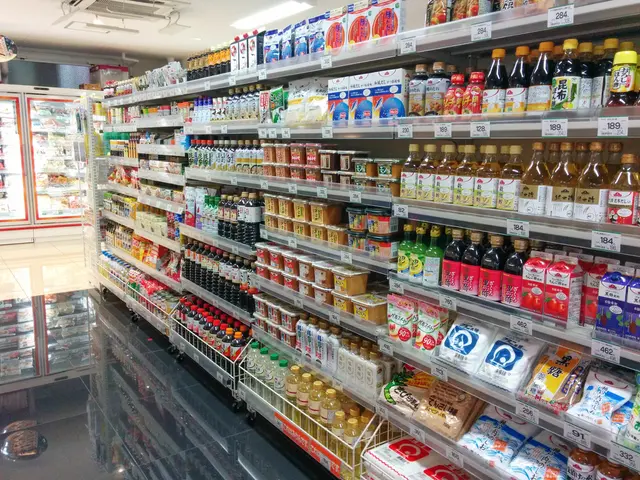CUTTING THE CREDIT CARD ON CAR BUYS
Car loan approvals experienced a decline twice over: Russian citizens show a decreased inclination towards securing loans for vehicle purchases.
Who wants to live on borrowed time, especially when it comes to splurging on pricey purchases like motors, especially with the current interest rates soaring? The key rate stands at 20%, and banks are flaunting loans at an eye-watering 25-26% per year or higher. Given these figures, it's no wonder that Russians aren't exactly jumping at the chance to take out loans for car purchases. The drop from last year is staggering, both in terms of quantity (a whopping 90.9 thousand) and cash - see "Graphic Evidence". This data comes from the agency "Autostat" in conjunction with the project Frank RG.
While the biggest dip was in the used car market - in the final month of spring, a paltry 33.3 thousand used cars were snapped up with bank finance, that's a mind-blowing 65.3% less than in 2025. The situation with new cars isn't as grim, but it's still a significant decrease of 15%.
SOCIETY TAKEAWAYS
The main cause of this slide is the market's slump and the lack of anticipation for a comeback, notes Anton Shaparov, vice-president of the National Automobile Union. In May alone, the volume of new car sales tanked by 28% compared to the previous year. Cars are just plain expensive - the average price tag hovers around the 3-million ruble mark. Most of those who could stretch to buy a set of wheels have already done so. The rest either can't manage it, even with credit, or prefer to keep their cash tucked safely in the bank, earning passive income.
SPEND OR SAVE? CASH IS KING
Here's another major reason for this decline - costly loans mean savings are a sweet deal. Many view them as a way to at least shield their savings from inflation, and if they're lucky, even boost them. Big expenditures, like upgrading their personal transportation, take a backseat.
Cars are either purchased by those who are in dire need, such as for work, or by the well-heeled who are impervious to the current costs. The rest are biding their time, especially city-dwellers where the demand for personal transport isn't as pressing - public transportation is available, and parking is a headache, according to auto expert Andrei Lomanov.
There's a third reason as well:
Financial Savviness, according to Anton Shaparin. Many Russians who took out car loans in anticipation of repaying them through military contracts are questioning whether they'll be able to maintain their wages. Meanwhile, others are struck by the increasing cost of everyday essentials like utilities, food, and medicine and ponder whether they'll be able to manage a car loan in such conditions, say, in a year or two. In this scenario, it's wiser to steer clear of such purchases, especially if they're not essential.
NEW OR USED? SHINY OR STEAL?
Intriguingly, on the new car market, most vehicles are purchased with the help of a loan. In May, according to "AutoStat", 91.2 thousand cars were shifted, of which 57.6 thousand were on finance - that's an impressive 63.1%! The average interest rate for these loans is a surprising low - only 13.2%, even 0.2 pp lower than last year, and less than half of the Central Bank's key rate!
"Those bargain basement auto loans are thanks to manufacturer incentives," explains Anton Shaparin. "Many brands offer discounts if you take out a loan. This cuts the bank's profits, which explains why new cars top the list. However, if you're opting for a used car, this option usually isn't available."
The average interest rate for used cars is already an aching 26.5% (an agonizing 6.7 pp increase from last year)! It's no shock that most of the reduction was in loans for used cars.
Another interesting trend is the drop in the average price of vehicles bought. Fancy models are losing their appeal, while older Ladas and previously beloved foreign models like the Kia Rio, Hyundai Solaris, Ford Focus, and Chevrolet Cruze are in fashion. Given their budget-friendly price tag (some are even under 200,000 rubles), they can be snapped up without financing.
- In light of the high-interest rates and the increase in living costs, many Russians are prioritizing saving over personal-finance options such as car purchases, resulting in a decrease in the number of car purchases financed by banks.
- The market's slump and the increasing costs of essentials like utilities, food, and medicine are causing some individuals to question their ability to maintain car loans, leading to a shift towards financial caution and saving their resources, rather than splurging on cars.
- The preference for used cars is on the rise, as they are often available for purchase without finance, making them a more affordable and feasible option for those seeking to avoid debt and maintain their financial stability.




